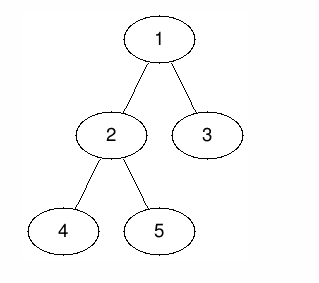CF1254D.Tree Queries
普及/提高-
通过率:0%
AC君温馨提醒
该题目为【codeforces】题库的题目,您提交的代码将被提交至codeforces进行远程评测,并由ACGO抓取测评结果后进行展示。由于远程测评的测评机由其他平台提供,我们无法保证该服务的稳定性,若提交后无反应,请等待一段时间后再进行重试。
题目描述
Hanh is a famous biologist. He loves growing trees and doing experiments on his own garden.
One day, he got a tree consisting of n vertices. Vertices are numbered from 1 to n . A tree with n vertices is an undirected connected graph with n−1 edges. Initially, Hanh sets the value of every vertex to 0 .
Now, Hanh performs q operations, each is either of the following types:
- Type 1 : Hanh selects a vertex v and an integer d . Then he chooses some vertex r uniformly at random, lists all vertices u such that the path from r to u passes through v . Hanh then increases the value of all such vertices u by d .
- Type 2 : Hanh selects a vertex v and calculates the expected value of v .
Since Hanh is good at biology but not math, he needs your help on these operations.
输入格式
The first line contains two integers n and q ( 1≤n,q≤150000 ) — the number of vertices on Hanh's tree and the number of operations he performs.
Each of the next n−1 lines contains two integers u and v ( 1≤u,v≤n ), denoting that there is an edge connecting two vertices u and v . It is guaranteed that these n−1 edges form a tree.
Each of the last q lines describes an operation in either formats:
- 1 v d ( 1≤v≤n,0≤d≤107 ), representing a first-type operation.
- 2 v ( 1≤v≤n ), representing a second-type operation.
It is guaranteed that there is at least one query of the second type.
输出格式
For each operation of the second type, write the expected value on a single line.
Let M=998244353 , it can be shown that the expected value can be expressed as an irreducible fraction qp , where p and q are integers and q≡0(modM) . Output the integer equal to p⋅q−1modM . In other words, output such an integer x that 0≤x<M and x⋅q≡p(modM) .
输入输出样例
输入#1
5 12 1 2 1 3 2 4 2 5 1 1 1 2 1 2 2 2 3 2 4 2 5 1 2 2 2 1 2 2 2 3 2 4 2 5
输出#1
1 199648871 399297742 199648871 199648871 598946614 199648873 2 2 2
说明/提示
The image below shows the tree in the example:
 For the first query, where v=1 and d=1 :
For the first query, where v=1 and d=1 :
- If r=1 , the values of all vertices get increased.
- If r=2 , the values of vertices 1 and 3 get increased.
- If r=3 , the values of vertices 1 , 2 , 4 and 5 get increased.
- If r=4 , the values of vertices 1 and 3 get increased.
- If r=5 , the values of vertices 1 and 3 get increased.
Hence, the expected values of all vertices after this query are ( 1,0.4,0.8,0.4,0.4 ).
For the second query, where v=2 and d=2 :
- If r=1 , the values of vertices 2 , 4 and 5 get increased.
- If r=2 , the values of all vertices get increased.
- If r=3 , the values of vertices 2 , 4 and 5 get increased.
- If r=4 , the values of vertices 1 , 2 , 3 and 5 get increased.
- If r=5 , the values of vertices 1 , 2 , 3 and 4 get increased.
Hence, the expected values of all vertices after this query are ( 2.2,2.4,2,2,2 ).